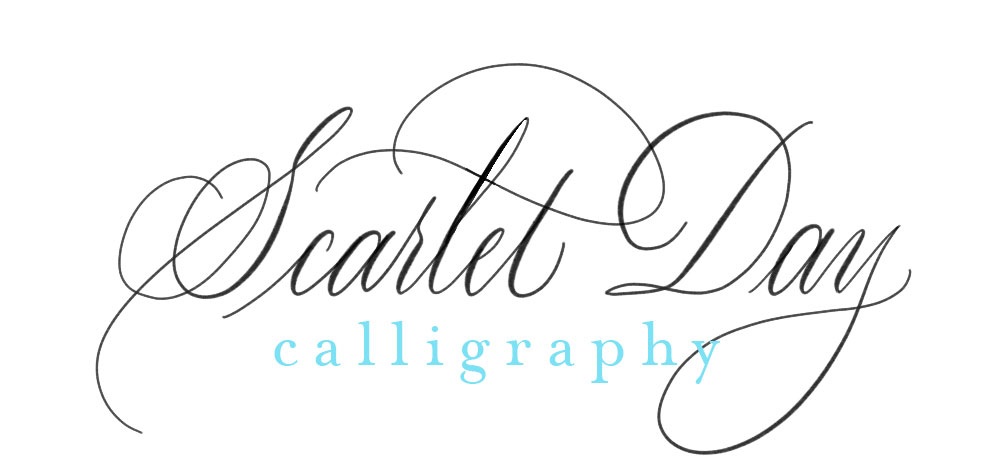"I"s "T"s or "J"s? Who knew context was so important?
"What letter is this?" I demanded of my husband.
"Errr, it's a very pretty one..."
"Yes, thanks," I replied, "but WHAT letter is it?"
He furrowed his brow. "It's a...J?...no, wait, a T. It's a really pretty T. Or a J. Or maybe a Y."
Spoiler alert: it was none of those letters.
My letter "I" was a stand-alone letter, produced for a fun little project called the Ransom Note exchange that was organized by the lovely Erica McPhee via The Flourish Forum. In short: participants make a number of copies of one letter. Send your letter out and you'll get a bunch of random letters back—those letters will spell out a word or phrase.
As soon as I received my assigned "I", I panicked. The letter is easy enough to write, but in many calligraphy alphabets it's virtually indistinguishable from the letter J (meaning the hubs wasn't far off after all!). In fact, some alphabets don't even include the letter J.
Why?
Because J wasn't always a letter! For more, lets turn to the internets:
"J originated as a 'swash' letter used for the letter "i" at the end of Roman numerals when following another 'i". (Thank you, Wikipedia.)
"The letter J was first distinguished by the Frenchman Pierre Ramus in the 16th century, but did not become common in Modern English until the 17th century...early works such as the first edition of the King James Bible printed the name Jesus with an I." (Thank you, Quora.)
Any Indiana Jones nerd can attest to this truth.
So I did a little experiment with my majuscules, writing out my "I"s, "J"s, and "T"s. Sure enough, they were all similar. After all, most letters are nothing more than an ever-changing series of foundational strokes with small tweaks in the finishing. A "B" is nothing more than an "R" that's been tucked in at the end. An "F" is a "T" with the tail coming across the body. I could go on and on...
But when placed next to one another, each letter giving the others a little more context, the confusion goes away. It's amazing what our brains can do with just a little bit of helpful information.
So what's my solution for making my "I" more clear for the Ransom Note exchange? A little context! Check my Instagram for the final product. And don't worry—all letters will go through the husband check before going out the door.
Top photo: PearlEx pigments in Solar Gold and Rose Gold, Hiro 41 nib.
Bottom photo: Sumi ink, Zebra G titanium nib.








